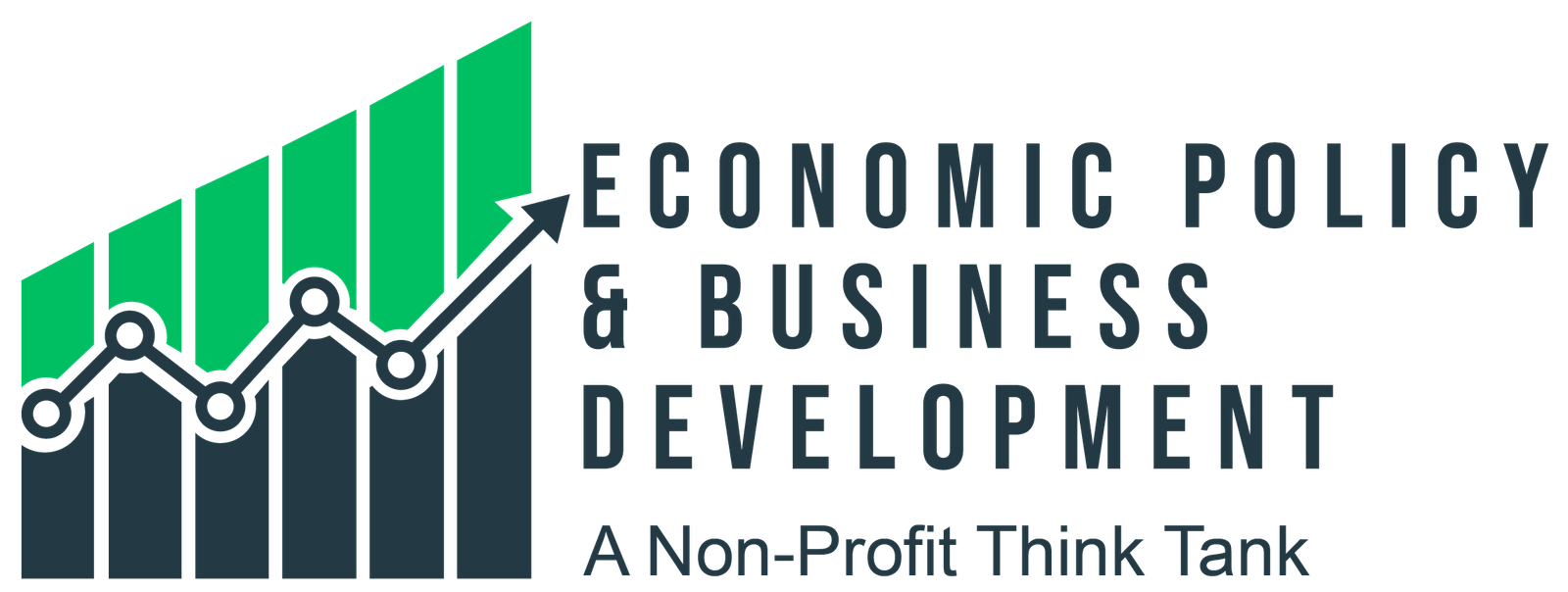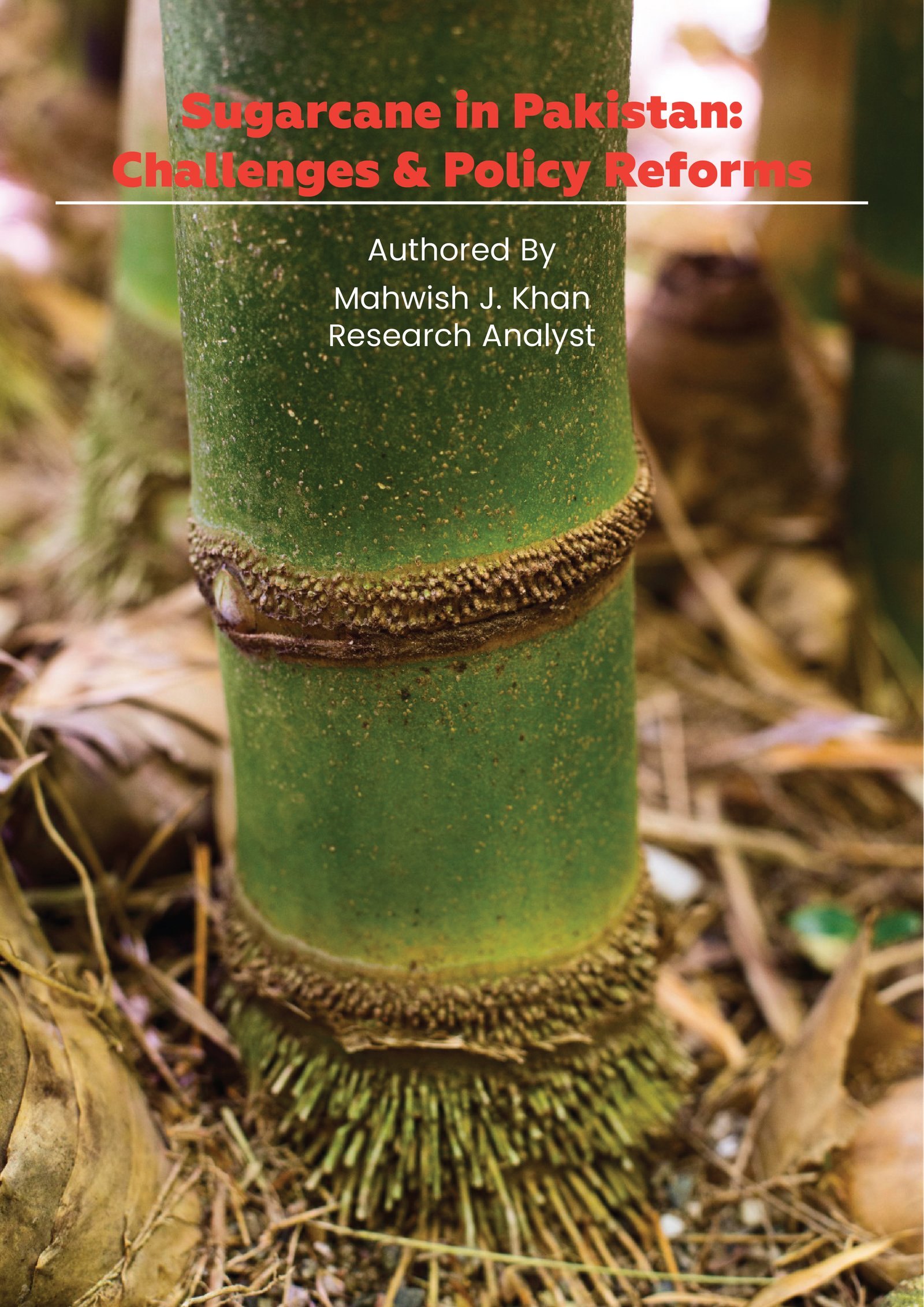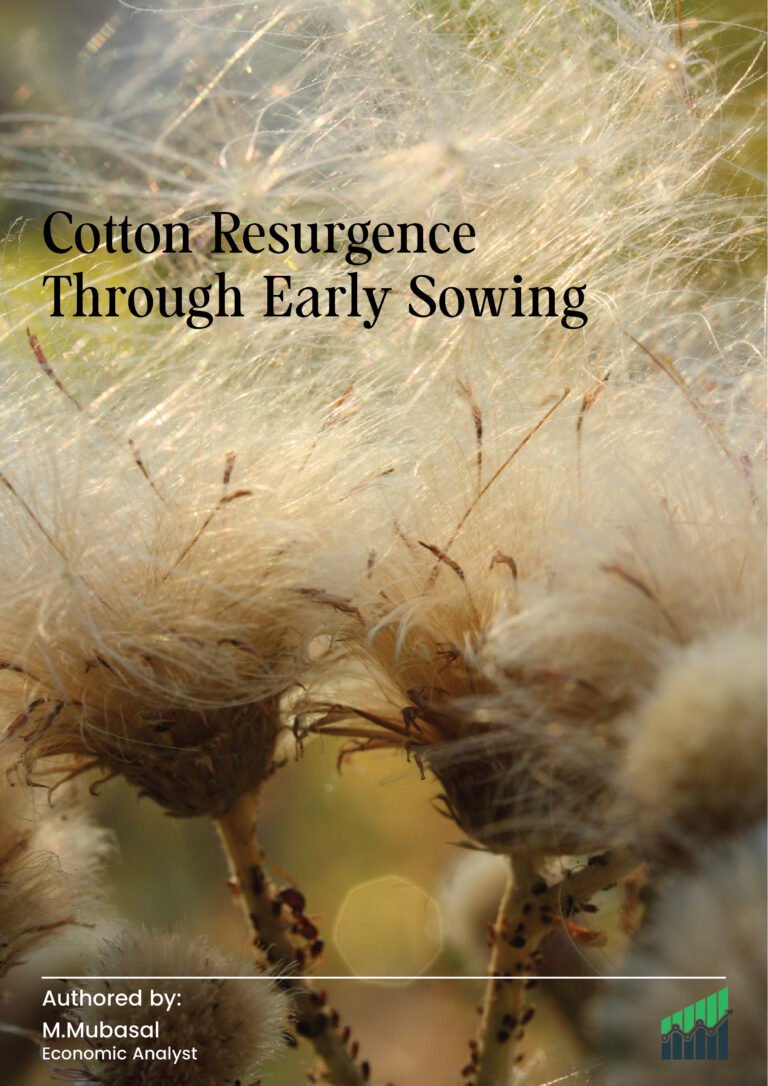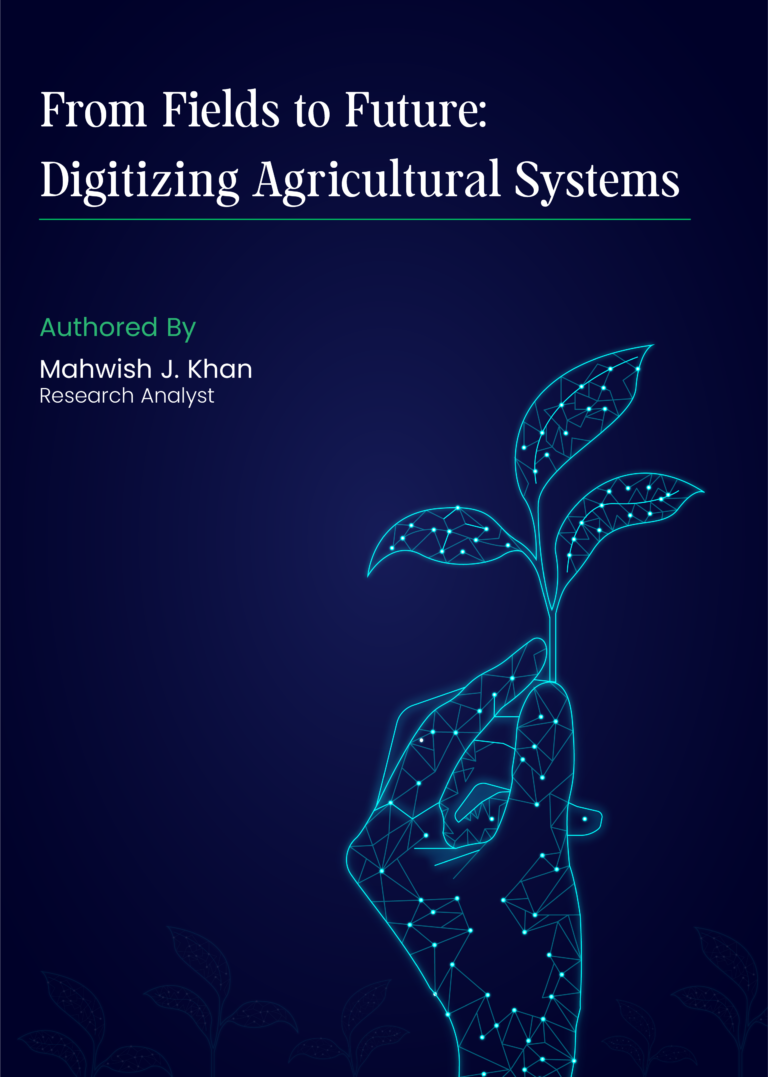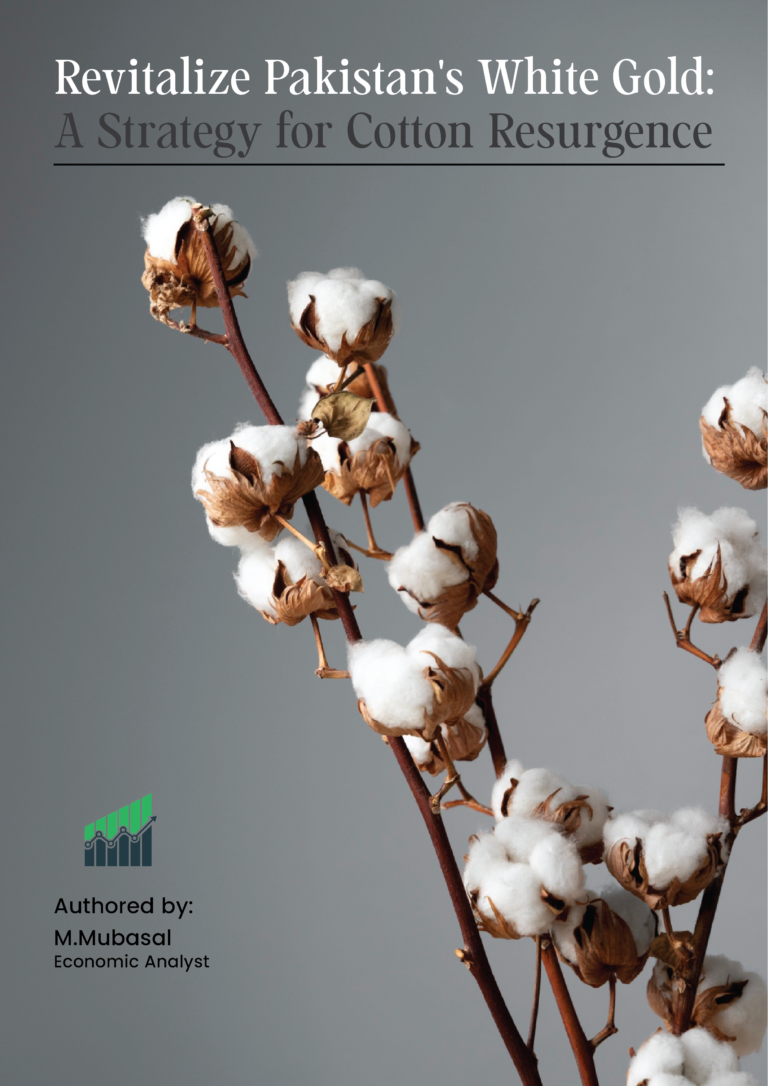Introduction
Sugarcane is a vital cash crop in Pakistan, playing a crucial role in the country’s agricultural and economic landscape. The sugar industry not only supports millions of farmers and laborers but also serves as a key contributor to the national economy. It accounts for 18% of large-scale manufacturing and contributes 1.9% to Pakistan’s GDP, making it one of the most significant agro-based industries . The sector influences both rural livelihoods and industrial output, underscoring its importance in Pakistan’s economic framework.
Despite its importance, Pakistan’s sugarcane industry faces persistent challenges that threaten its long-term sustainability. Low yield rates, inefficient resource management, and a water-intensive cultivation system have hindered productivity. Additionally, the industry’s market structure suffers from price volatility, policy inconsistencies, and monopolistic practices, affecting both farmers and consumers. Climate change further exacerbates these challenges, with rising temperatures and unpredictable rainfall patterns reducing crop yields.
Given these pressing concerns, comprehensive policy reforms are essential to improve productivity, ensure fair market practices, and promote sustainable water and land management. Addressing these challenges through modern agricultural techniques, efficient irrigation systems, and transparent pricing mechanisms can unlock the full potential of Pakistan’s sugarcane sector, securing its role in the nation’s economic and agricultural future.
Current Status of Sugarcane Production
Pakistan’s sugarcane production is expected to reach 83.5 million metric tons in the 2024/25 season, reflecting a 3% increase from the previous year . This growth is attributed to favorable weather conditions, improved farming techniques, and government policies supporting the sector. The majority of sugarcane cultivation is concentrated in Punjab and Sindh, which together account for approximately 93% of the country’s total production. Punjab, with its well-developed irrigation system, leads in sugarcane yield, while Sindh benefits from its longer growing season. Despite this upward trend in production, challenges such as water scarcity, fluctuating market prices, and inefficiencies in sugar mills continue to impact the industry’s overall growth and sustainability.
Sugarcane cultivation in Pakistan is highly concentrated in Punjab and Sindh, which together account for approximately 93% of the country’s total production. Khyber Pakhtunkhwa (KP) and Balochistan contribute minimal sugarcane production due to less favorable climatic and soil conditions.
| Province | Sugarcane Production (Million Metric Tons) | |
| Pakistan (Total) | 78.581 | 10.7% decline from last year |
| Punjab | Data not available for 2023-24 | Produced 1.384 MMT of sugar by Dec 2023[1] |
| Sindh | Data not available for 2023-24 | Produced 0.725 MMT of sugar by Dec 2023 (up from 0.485 MMT)[2] |
Challenges Facing the Sugarcane Industry
Pakistan’s sugarcane yield remains significantly lower than global and regional averages, producing 46 tons per hectare, compared to the world average of over 60 tons and India’s 65–70 tons per hectare . Several structural challenges contribute to this low productivity, threatening the long-term sustainability of the industry.
One of the most pressing concerns is water scarcity, as sugarcane is a highly water-intensive crop. Declining water availability, especially in Punjab and Sindh, has made it increasingly difficult to sustain high yields. Inadequate irrigation practices, inefficient water distribution, and climate change-induced temperature rises further exacerbate this issue. Studies indicate that just a 1°C increase in temperature could reduce yields by 10%, disproportionately affecting smallholder farmers, who cultivate 64% of the total crop . On the contrary, India manages sugarcane production despite rising temperatures and climate change through a combination of climate-resilient initiatives, traditional practices, and modern technology. The National Innovations in Climate Resilient Agriculture (NICRA), launched in 2011, focuses on adaptation and mitigation strategies, research, and capacity-building to help farmers cope with climate variability. Additionally, India practices ratooning, a traditional method of regrowing sugarcane from harvested stubble, reducing cultivation costs and ensuring early ripening with proper irrigation and pest control. To combat increasing pest and disease occurrences due to climate change, Integrated Pest Management (IPM) promotes organic farming and controlled pesticide use. Furthermore, access to agricultural credit enables farmers to invest in adaptive technologies, ensuring sustained productivity. Moreover, early warning systems and agrometeorological services provide timely weather updates, allowing farmers to make informed decisions on planting, irrigation, and harvesting. By integrating these strategies, India strengthens its sugarcane sector, ensuring sustainable production and safeguarding the livelihoods of millions of farmers against climate-related challenges. Beyond environmental concerns, the industry also grapples with economic inefficiencies. Farmers struggle with fluctuating market prices, delayed payments from sugar mills, and government-imposed price controls, which directly impact their profitability. Moreover,
many sugar mills operate with outdated technology, leading to higher processing costs and lower extraction rates, further weakening the industry’s efficiency. The lack of investment in modernized milling and extraction techniques continues to put Pakistan at a disadvantage compared to more competitive sugar-producing countries.
Additionally, the lack of crop diversification has contributed to long-term sustainability concerns. The disproportionate focus on sugarcane cultivation has led to reduced land for staple food crops, raising concerns about food security and soil depletion. Overreliance on a single crop also increases economic vulnerability, as farmers have fewer alternatives when facing price fluctuations or climate-related losses.
Addressing these deep-rooted issues requires urgent policy interventions. Pakistan must prioritize modernizing irrigation systems, investing in high-yield and climate-resilient sugarcane varieties, upgrading milling infrastructure, and implementing transparent pricing mechanisms to ensure a sustainable and competitive sugarcane sector.
Economic and Policy Issues
The sugar industry in Pakistan is deeply influenced by market dynamics and government policies, both of which play a crucial role in shaping production levels, profitability, and overall sustainability. However, inefficiencies in resource allocation, outdated milling technology, and regulatory inconsistencies continue to hinder the industry’s potential. Pakistan’s sugarcane industry is significantly shaped by government policies concerning production, trade, and pricing. These policies aim to balance the interests of farmers, mill owners, and consumers, while addressing challenges such as resource inefficiency and market distortions.
In recent years, the government has increased support prices for sugarcane to encourage higher production. For instance, during the 2023/24 season, the Punjab government set the minimum support price at 400 Pakistani Rupees per 40 kilograms, a 33% increase from the previous year . This policy aims to provide farmers with better earnings and incentivize expanded cultivation. However, the government has yet to announce the support price for the 2024/25 season, with the crushing season expected to begin at the end of November.
One of the biggest challenges is inefficient resource use and uncompetitive practices, which are often exacerbated by weak regulatory oversight. Many sugar mills still rely on obsolete processing techniques, leading to low extraction rates, higher production costs, and reduced overall efficiency. Additionally, price manipulation, hoarding, and cartel-like behavior among mill owners distort market dynamics, making it difficult for farmers to receive fair compensation while keeping sugar prices unstable for consumers. These factors not only undermine global competitiveness but also create supply chain inefficiencies that ripple across the entire agricultural sector.
- hps://www.chinimandi.com/season
- hps://www.fao.org/4/X0513E/x0513e23.htm
- Sustainable sugarcane in Pakistan: Building smallholders’ capacity
- hps://apps.fas.usda.gov/newgainapi/api/Report/DownloadReportByFileName?fileName=Sugar+Semiannual_Islamabad_Pakistan_PK2024-0011.pdf
Government intervention, particularly through support price mechanisms, has significantly influenced sugarcane cultivation. Recent increases in government-mandated support prices have incentivized farmers to expand sugarcane production, seeing it as a financially stable option compared to other crops.
While this policy boosts farmer incomes, it also creates imbalances in crop diversification, as more land is allocated to sugarcane at the expense of essential crops like wheat, maize, and cotton. This shift not only affects food security but also places additional pressure on water resources, as sugarcane is a high-water-demand crop.
Another critical issue is the delayed payments from sugar mills to farmers, which has been a persistent challenge in the industry. Many growers face extended payment cycles, leaving them financially vulnerable and unable to reinvest in the next cropping season. This cash flow uncertainty discourages small farmers from continuing sugarcane cultivation, while large mill owners continue to benefit from imbalanced power dynamics in the market.
Addressing these economic and policy challenges requires comprehensive reforms that promote greater transparency, fair market competition, and long-term sustainability. Modernizing the sugar supply chain, investing in efficient milling technology, and ensuring timely payments to farmers are essential to creating a more equitable and productive sugar industry. Additionally, the government must adopt a balanced agricultural incentive structure that supports crop diversification, sustainable water use, and fair pricing mechanisms to protect both farmers and consumers in the long run.
Strategies and Way Forward
Enhancing sugarcane production in Pakistan necessitates a multifaceted approach focusing on agricultural innovation, efficient water management, and comprehensive policy reforms. The adoption of high-yield, disease-resistant sugarcane varieties is paramount. Institutions like the Ayub Agricultural Research Institute (AARI) have developed 28 such varieties, including the recently approved insect-resistant (CABB-IRS) and herbicide-tolerant (CABB-HTS) transgenic strains, which promise increased productivity and resilience against pests and weeds . However, all approved varieties of AARI have been in the fields for many years, and while each has its own genetic potential for yield, insect-pest, and drought resistance, their productivity declines over time due to prolonged cultivation. The need, therefore, is to cultivate newly approved varieties like YTFG-236, CPF-253, CPF-237, and CP77-400, which the Punjab Agriculture Department is actively promoting to enhance yield potential. Meanwhile, according to PARC instructions, sugarcane strains CABB-IRS and CABB-HTS are still under trial at SRI-AARI, FSRDC-FSML, and SRI-Tandojam for insect-pest and disease resistance, and are not yet approved for large-scale commercial cultivation pending final evaluation. Such advancements play a vital role in driving agricultural progress and ensuring long-term sustainability in Pakistan’s sugarcane sector.
Water scarcity remains a critical challenge for sugarcane cultivation in Pakistan. Implementing efficient irrigation systems, such as drip or sprinkler methods, can significantly reduce water usage. However, the traditional warabandi system, which allocates water on a fixed rotational basis, often leads to inefficiencies and does not accommodate the on-demand irrigation needs of crops. Reforming this system to allow more flexible and efficient water distribution is essential for optimizing water use in agriculture.
Policy reforms are equally crucial in revitalizing Pakistan’s sugarcane industry. Developing transparent and equitable policies can ensure fair profit distribution among all stakeholders, from farmers to mill owners. Historically, the sugar sector has been influenced by powerful vested interests, often leading to market distortions and inequities. Implementing reforms that promote transparency, fair pricing, and accountability can help dismantle these entrenched power structures, fostering a more equitable and efficient industry.
To enhance sugarcane production, it is essential to select high-yielding varieties suited to local conditions while ensuring growers have access to agricultural inputs at subsidized rates. Optimizing irrigation practices, maintaining balanced fertilization, implementing effective pest and disease management, and preparing soil properly are crucial for improving crop health and productivity. Additionally, timely plantation and the use of appropriate harvesting techniques further enhance yields. Considering climate factors, crop rotation is also recommended to maximize production potential and maintain soil fertility, ensuring long-term sustainability in sugarcane farming.
By integrating these strategies—embracing advanced agricultural practices, overhauling water management systems, and enacting robust policy reforms—Pakistan can enhance its sugarcane yield and ensure the industry’s long-term sustainability.
Conclusion
The sugarcane industry is vital to Pakistan’s agricultural economy, supporting millions of farmers and contributing to manufacturing and GDP. However, low yields, water scarcity, inefficient resources, market distortions, and outdated mills hinder its potential. While government policies aim to stabilize the sector, they often disrupt crop diversification and create financial uncertainty for farmers. Addressing these multifaceted challenges requires a collaborative approach involving farmers, industry stakeholders, and policymakers to develop holistic and sustainable solutions. Implementing modern agricultural practices, efficient irrigation systems, and policy reforms can enhance productivity, improve resource management, and ensure the industry’s long-term viability. By fostering sustainability, transparency, and efficiency, Pakistan can modernize its sugarcane industry, securing agricultural resilience, economic stability, and food security for future generations.
Contact
ECONOMIC POLICY
& BUSINESS DEVELOPMENT
051 8840099 | 051 8840019
Pakistan www.epbdt.com
[1] hps://www.pbs.gov.pk/sites/default/files/naonal_accounts/qna/publicaons/QNA%20Release%20202324%20Q2.pdf
[2] hps://www.chinimandi.com/season-2023-24-pakistans-sugar-producon-increases-by-five-percent/ 4 hps://www.chinimandi.com/season-2023-24-pakistans-sugar-producon-increases-by-five percent/
